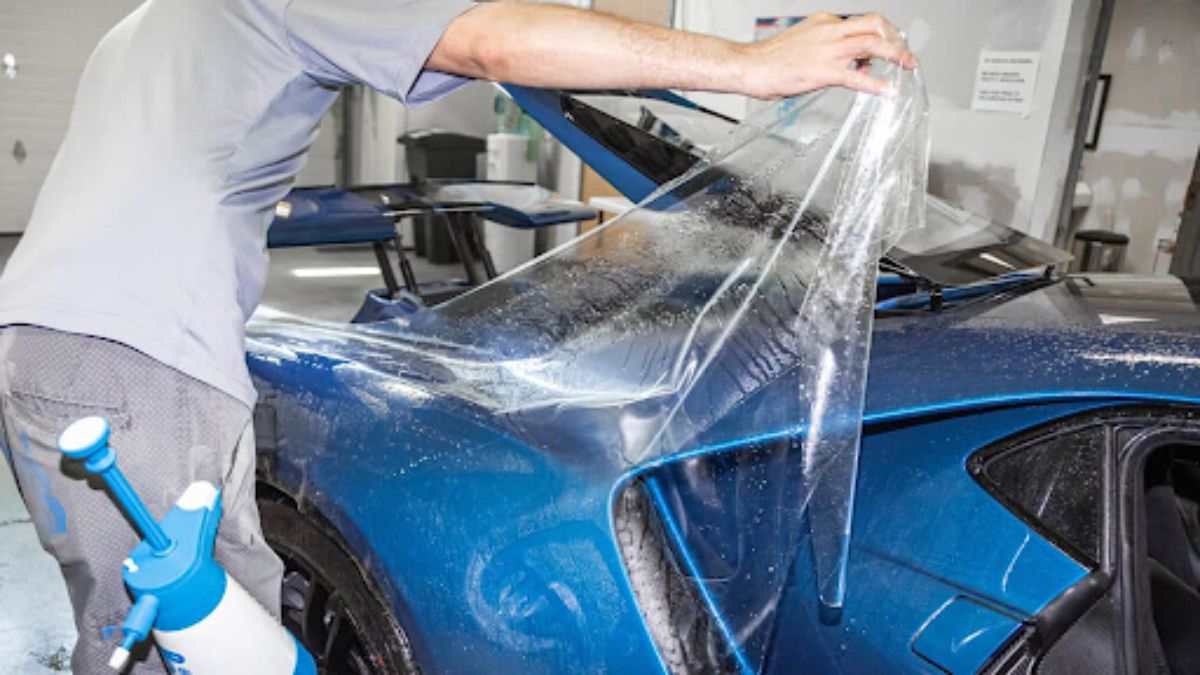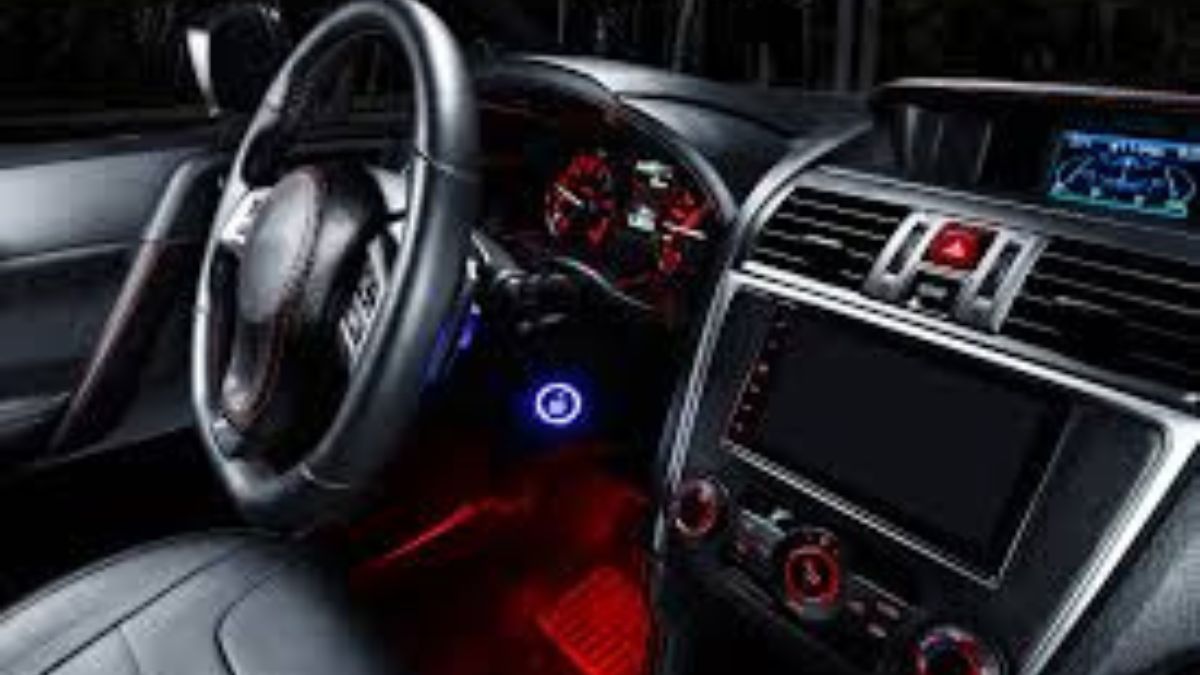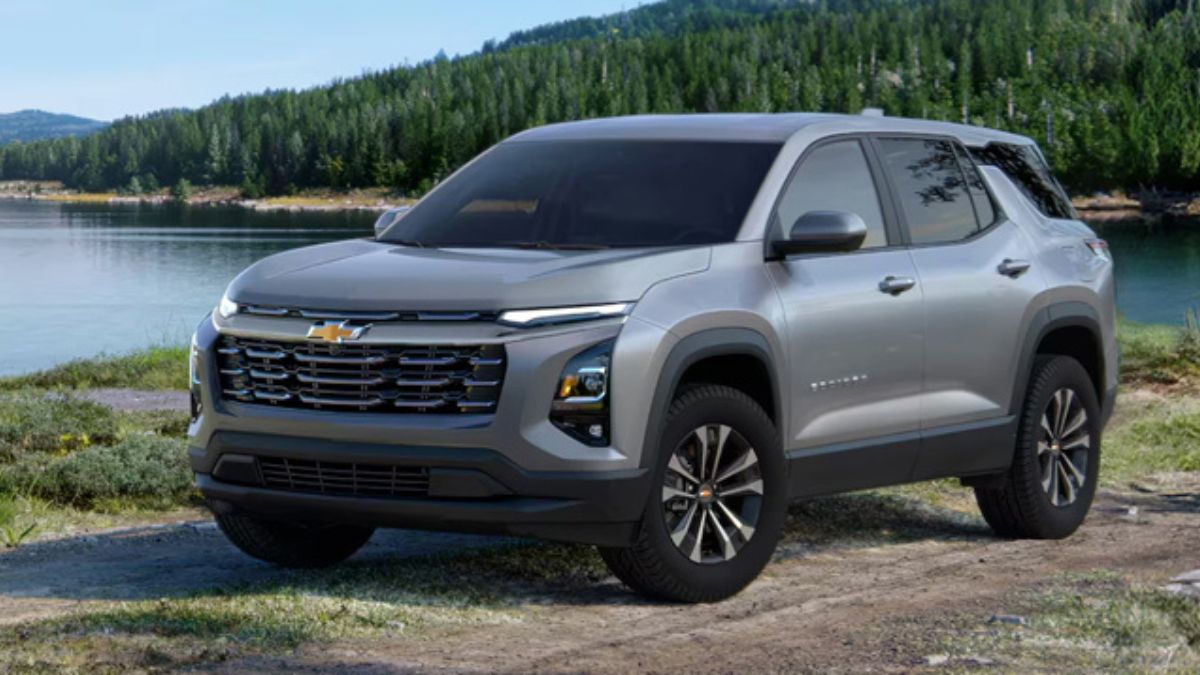AUTOMOTIVE
How to Find the Best Salvage Cars for Sale?

Ever wondered if buying a salvage car is a smart move? It can be—if you know what you’re doing. Salvage title cars for sale can be a budget-friendly way to get a vehicle, whether for personal use, resale, or spare parts. But not all salvage cars are worth it. Some are hidden gems, while others are money pits.
So, how do you spot the good ones? That’s what this guide is all about. Stick around, and by the end, you’ll know exactly how to find, inspect, and buy a salvage car without regrets.
Why Buy a Salvage Car?
The big appeal? Price. Salvage cars sell for a fraction of their market value. If you’re handy with repairs, you can get a great deal and fix it up yourself. Some people even buy them just for the parts—sometimes, the individual components are worth more than the car itself.
Another reason? Rare finds. Salvage auctions often have cars you wouldn’t see at regular dealerships. From sports cars to vintage models, you might just stumble upon something special.
Determine Your Purpose and Budget
Before diving in, be clear on why you want a salvage car. Are you looking for a daily driver? A project car? Something to flip for profit? Your goal will shape your budget and what kind of damage you can tolerate.
Next, set a budget—and stick to it. Buying a salvage car isn’t just about the purchase price. Repairs, inspections, and registration fees can add up fast. A deal that looks too good to be true? It probably is.
Where to Find Salvage Cars for Sale
You have options.
Online salvage car auctions are one of the best places to start. These platforms let you browse thousands of listings, compare prices, and even bid from home. Just make sure to read the descriptions carefully—some sellers are more transparent than others.
Local salvage yards and dealerships are another option. The benefit? You can inspect the car in person before making a decision. Some even offer minor repairs or rebuilt titles, saving you some hassle.
How to Evaluate a Salvage Car’s Condition
Not all salvage cars are created equal. Some have minor damage, while others have been through floods, fires, or major collisions. How do you tell the difference?
First, check the title. A salvage title means the car was declared a total loss by an insurance company. But there’s a big difference between a car with minor cosmetic damage and one with a destroyed frame.
Next, review the damage report. Many auctions provide details about why the car was totaled. Look for red flags like flood damage—those cars often have lingering electrical issues that aren’t easy to fix.
If possible, inspect the car in person or hire a mechanic. Some damage is obvious, but other issues—like hidden rust or a misaligned chassis—aren’t easy to spot without a professional.
Research Repair Costs and Insurance Options
Buying a salvage car is just the first step. Repairing it? That’s another story.
Before you bid, get repair estimates. Some damage looks worse than it is, while other issues (like a bent frame) are expensive to fix. If you’re not a mechanic yourself, consult one before making a decision.
Then, check insurance options. Not all insurance companies will cover salvage cars. Some only offer liability coverage, while others require an extensive inspection before insuring a rebuilt salvage vehicle. Call around and compare quotes before committing.
How to Win at Salvage Car Auctions
If you’re buying through an auction, strategy matters.
Set a max bid—and don’t go over it. It’s easy to get caught up in the excitement and overpay. Know your limit and stick to it.
Research the car’s market value. Just because it’s salvage doesn’t mean it’s a good deal. Compare prices of similar models in rebuilt condition to see if it’s worth the investment.
Watch out for hidden fees. Some auctions charge buyer’s premiums or storage fees if you don’t pick up the car on time. Read the fine print before placing a bid.
Legal Considerations and Paperwork
Buying a salvage car comes with extra paperwork. Don’t skip this step.
First, understand the title types. Some states issue “salvage titles,” while others use terms like “rebuilt” or “flood-damaged.” Each comes with different restrictions for registration and resale.
Next, check state laws. Some states make it harder to register salvage vehicles than others. You may need a special inspection before getting plates.
Finally, get a bill of sale and a VIN check. This ensures the car isn’t stolen and gives you legal proof of purchase.
Common Mistakes to Avoid
Even experienced buyers make mistakes. Here are some to watch out for:
Overpaying for Repairs
Some salvage cars need more work than they’re worth. Always estimate repair costs before buying. Otherwise, you could spend more on repairs than the car is worth.
Ignoring Hidden Damage
Not all issues are visible. Frame damage, electrical problems, and rust can be costly. If possible, have a mechanic inspect the car before buying.
Buying Without Researching Insurance
Not all insurers cover salvage cars. Call your insurance company first to see what’s possible before making a purchase.
Skipping the VIN Check
A salvage title doesn’t always tell the whole story. Run a VIN check to see the car’s accident history, odometer readings, and previous ownership records.
Rushing the Purchase
Auctions move fast, but that doesn’t mean you should. Take your time to review listings, check the car’s background, and compare prices before bidding.
Is a Salvage Car Right for You?
A salvage car can be a great deal—but only if you go in with your eyes open. If you’re handy with repairs or looking for a project, it can be a smart buy. If you’re hoping for a quick, hassle-free purchase? A salvage car might not be for you.
The key is research. Know what you’re buying, understand the risks, and never rush into a deal. Do that, and you just might score a great car at a fraction of the price.
AUTOMOTIVE
Paint Protection Film vs. Ceramic Coating: Which One is Right for You

With every business related to the automotive industry, protection of the vehicle is a very important aspect. Every car dealership, detailing shop, or fleet operator understands that choosing between Paint Protection Film (PPF) and Ceramic Coating can be a game changer. It’s all about making the best choice for your money. Understanding the differences in application process and long term benefits are critical when making an informed decision that helps maximize customer satisfaction. It helps with vehicle longevity and resale value too!
To enable you to better customize the service to your needs, this guide compares the benefits, costs, and ideal applications of PPF. We will discuss how each option works, who gains the most advantage from their application, as well as the pros and cons of each option. This guide goes even further and focuses on aesthetic enhancement of premium vehicle protection and provides you with insights into the most effective protective strategy for your business.
Understanding Paint Protection Film
Paint Protection Film (PPF) is a clear polyurethane film applied to areas of cars that are prone to damages such as scratches and rock chips. It acts as a protective layer and can be easily repaired if damaged. It creates a strong shield that makes impact resistant to let you avoid unnecessary repairs.
Unlike wax or sealants, PPF provides greater scratch resistance, thus offering paint protection for a longer period of time. This makes it a premium choice for dealmakers, fleet managers, and owners of luxury cars who seek to retain the value of their assets.
PPF is known for its autonomous restoration abilities, in which case scratches or marks are eliminated upon heating. This attribute ensures that vehicles appear brand new for ages, hence less maintenance and care is needed as the varnish armor will do it all. Moreover, PPF comes with antioxidative properties, which ensures the paint does not fade or oxidize. Several custom PPF makers, including ClearPro, produce premium quality PPF solutions that provide chemical protection, high clarity, and long-lasting durability, thus capturing the attention of B2B clients who seek reliable protection solutions.
Exploring Ceramic Coating
Ceramic Coating is a liquid polymer applied to a vehicle’s surface, forming a hydrophobic layer that repels water, dirt, and contaminants. Unlike PPF, Ceramic Coating does not offer impact resistance, but it provides excellent chemical and UV protection that enhances the vehicle’s paint longevity. When installed the right way, the surface bonded to the coating is protected from bird waste, tree sap, as well as acid rain.
For detailing businesses and auto dealerships, Ceramic Coating is a popular choice because it enhances paint gloss and makes vehicle maintenance easier. The coating boosts the car’s reflectivity to an absolute peak, providing a showroom grade shine to the vehicle and appealing to consumers.
Moreover, it reduces water marks and debris buildup, which tends to keep the vehicles clean longer. While Ceramic Coating does not offer any physical protection against scratches, it works as an effective barrier against rust, discoloration, and chemical stains, making it a great additional option for auto detailing and servicing businesses.
Cost Comparison and ROI
The choice between PPF and Ceramic Coating is determined by the available finances, desired protection, and anticipated ROI from the business. Companies that operate fleets or own high value vehicles will find PPF a more cost effective option because it provides superior protection from physical assets. It lasts 5 to 10 years, reducing the need for exterior repairs and increasing resale value. Because PPF inhibits scratches, chips, and sun damage, vehicles are able to keep their paint quality which increases the vehicles market value.
Ceramic Coating, however, is more economical in the short term and boasts a lifespan of 2 to 5 years depending on how well it is maintained. Though it will not stop scratches or rock chips, it does possess decent resistance to chemicals, UV light, and water, which helps in making the vehicles easier to clean.
In the detailing industry, ceramic coating is a good solution for catching the attention of customers wanting aesthetic enhancement and easier maintenance. It is often promoted as a high-end service by businesses in the industry because of the shine and depth it adds to a vehicle’s paint, making it easy to sell to car lovers and customers looking for a sleek, glossy finish.
Which Option Fits Your Business
Business needs, customer preferences, and service offerings all dictate the choice between PPF and ceramic coating. The restorative solutions serve different industries, based on their intended clientele.
- Auto Dealerships: While PPF is the best for high-value and luxury vehicles protection, ceramic coating is wonderful for dealers who want to make their cars in the showroom look more appealing. By offering both services dealers can increase their value proposition and capture a wider audience.
- Detailing shops: For business focusing on vehicle aesthetics and detailing, PPF and ceramic coating as two offered services is good for business. Detailers can cater to the clients looking for maximum protection with PPF, and make it easier for other clients with a more affordable high gloss service option that directly appeals to them with the ceramic coating service. By expanding services, detailers gain access to different segments allowing them to diversify revenue streams.
- Fleet Management : Companies overseeing rental cars, rideshare services, or commercial vehicles will significantly benefit from PPF due to its high resiliency to physical damage. With PPF, companies will reduce expenditure on repairs and increase vehicle utilization, allowing fleet vehicles to sustain maintenance in great shape despite high frequency usage.
Final Thoughts
Both Paint Protection Film (PPF) and Ceramic Coating have their respective importance, although they are not interchangeable. If your business is focused on sustained usage and impact protection, PPF is the best option. Particularly beneficial is its use in high value cars, fleet management, and commercial businesses where maintaining the vehicle’s paint is critical. For some businesses that aim for greater appeal and paints that are equally effortless to look after, Ceramic Coating provides a solid alternative as it enhances the decoration appealing and anti-chemical resistant qualities of the vehicle.
Choosing a reputable paint protection film manufacturer like ClearPro enables your business to provide effective vehicle protection solutions. Whether you plan to broaden your service, delight your customers, or maximize income, these choices will aid in improving efficiency and fostering sustainable growth. This is how choosing PPF or Ceramic Coating is a business decision as much as it’s a way of ensuring automotive assets are guarded.
AUTOMOTIVE
Driving in Style: The Importance of Customizations for Your Vehicle

Driving isn’t about getting to your destination; it’s about how you feel on the way there. Your car can show off your style and make every ride special. Customizations for your vehicle add a personal touch, whether it’s how it looks or how it drives.
With small changes, your car becomes more you, and the drive becomes more fun. Want to know more? Keep reading to discover how simple upgrades can make a big difference!
Why Customizations Matter
Standard cars get the job done, but they might feel boring for some drivers. Customizing a car makes it stand out and reflect your personality. Adding special touches can improve how the car runs and feels.
Personalizing your car lets you show off your style and taste. Comfort upgrades can make driving easier and more enjoyable. Performance upgrades help the car run smoother and handle better on the road.
Types of Customizations for Your Vehicle
When it comes to customizations for your vehicle, the options are endless. You can focus on both external and internal modifications or even dive into performance enhancements that can change how your car drives. Consider some of the most popular choices:
Exterior Modifications
Changing the look of your vehicle can make it one-of-a-kind. Custom paint jobs, decals, or wraps, can set a vehicle apart from the crowd. Additionally, enhancing lighting elements or upgrading wheels and tires can also reshape the personality of your car.
Interior Enhancements
The interior of your vehicle is where you spend the most time, so it’s crucial for it to reflect your tastes. Custom upholstery and tailored dashboards not only enhance appearance but can improve comfort. Additionally, quality speakers in your car audio and advanced tech integrations can transform your driving experience into one that’s luxurious.
Performance Upgrades
This category includes the use of custom car parts designed for your vehicle. Whether it’s installing a turbocharger for extra horsepower or springing for a brake upgrade, performance enhancements can improve handling and speed. The right modifications can make every drive more engaging and exhilarating.
Emphasizing Unique Style and Preferences
Every driver’s needs and desires are different. Some seek out customizations for practical reasons, like improving fuel efficiency or aiding in handling. Others may prioritize unique aesthetic elements that stand out. Regardless of your motivations, understanding your vehicle’s potential for customization can change how you perceive your driving experience.
Making the Right Choices
When considering customizations, it’s essential to prioritize quality and compatibility. Research is key to ensuring that the modifications you choose not only suit your tastes but also enhance your vehicle’s overall performance and safety. Investing in reputable brands and professional installation is vital for achieving the best results.
Create Your Dream Car Today!
Customizations for your car means making it yours, reflecting who you are and how you want to drive. It’s more than upgrades – it’s about transforming every ride into something special. Start personalizing your vehicle now and enjoy every trip in a car that feels perfect for you.
Dive into more tips on custom cars in our blog!
AUTOMOTIVE
Best Chevy Lease Deals: Affordable Offers on Top Models

Looking for a great deal on a Chevy lease?
Getting a new car doesn’t have to break the bank. Chevrolet offers affordable lease deals on popular models like the Silverado, Equinox, and Traverse. These offers give you lower monthly payments and flexible terms.
Whether you need a fuel-efficient sedan or a roomy SUV, there’s an option for you. Leasing lets you drive a new vehicle without a long-term commitment. Plus, you can upgrade to the latest model every few years.
Check out the best Chevy lease deals available now and find the perfect fit for your budget and lifestyle.
Check Current Chevy Offers
Chevrolet often has special lease offers on popular models. These deals can lower your monthly payment or reduce upfront costs. Check the official Chevy website to see the latest discounts.
Some offers may include cashback or lower interest rates. You might also find deals with reduced down payments. These promotions change often, so check regularly.
Local dealerships may also have exclusive discounts. Some stores match or beat national offers. Ask about any unadvertised specials that could save you more.
Read the fine print before signing a lease. Some deals have restrictions or hidden fees. Make sure the offer works for your budget and needs.
Compare Dealer Promotions
Not all Chevy dealerships offer the same deals. Some have better discounts, while others include perks. Visit multiple dealers to see who has the best offer.
Look for promotions on specific models. Some dealers offer lower lease payments on cars they need to sell. Others provide free maintenance or extra incentives.
Ask about dealer-only specials. Some discounts are not advertised online. Speaking with a salesperson may help you find a hidden deal.
Check online reviews before choosing a dealership. A great deal is only worth it if the dealer provides good service.
Negotiate Lease Terms
You can often negotiate when you lease a Chevy. Dealers may lower fees or offer better terms. Always ask if there’s room for a better deal.
Focus on the total lease cost, not just the monthly payment. A low payment may mean higher fees later. Ask about the money factor, which affects interest rates.
Request a lower down payment if needed. Some dealers allow flexible upfront costs. You may also get extra perks, like free maintenance.
Be polite but firm when negotiating. Dealers want to lease cars, so they may meet your request. If not, check another location for a better offer.
Know Your Mileage Limit
Most Chevy leases have a yearly mileage limit. This is usually between 10,000 and 15,000 miles. Driving more than this can lead to extra fees.
Check the lease agreement to see the exact limit. Some dealers let you pay for extra miles upfront. This is cheaper than paying at the end of the lease.
Think about how much you drive each year. A lower mileage lease may cost less, but it may not fit your needs. Choose a plan that works for your lifestyle.
If you go over the limit, the extra cost adds up quickly. Plan your driving to avoid high fees. If needed, ask about lease options with more miles.
Watch for Hidden Fees
Leasing a Chevy comes with extra fees that may not be clear at first. Some charges are small, but others can add up fast. Always ask about extra costs before signing.
Disposition fees apply when returning the car at the end of the lease. This fee covers cleaning and resale costs. Some dealers may waive it if you lease another Chevy.
Wear-and-tear fees can surprise many drivers. Small dents, scratches, or stains may lead to charges. Take care of the car and ask about damage policies.
Early termination fees apply if you end your lease early. This can be expensive, so check the contract. Make sure you can commit to the full lease term.
Consider a Higher Down Payment
A larger down payment can lower your monthly lease costs. Putting more money upfront reduces how much you owe. This can make payments more affordable over time.
Lower payments help you stay within budget. A high monthly cost may strain your finances. A bigger down payment gives you more control over expenses.
Dealers may also offer better terms with a larger payment. They see it as less risk for them. You may get lower interest rates or fewer fees.
Make sure the down payment fits your budget. Paying too much upfront can leave you short on cash. Find a balance that works for you.
Check End-of-Lease Options
Your lease will end, so it’s important to plan ahead. Chevy offers different options when your contract is up. Knowing them early can help you decide.
One option is to return the car and walk away. This works if you want a new model. Make sure the vehicle meets wear-and-tear rules to avoid extra fees.
You can also buy the car if you like it. Some leases include a buyout price in the contract. Compare this price to market value before deciding.
Another choice is to lease a new Chevy. Some dealers offer loyalty deals for repeat customers. Ask about special offers if you want to upgrade.
Lease at the Right Time
Timing can help you get the best deal. Dealers offer discounts at certain times of the year. Shopping at the right moment can save you money.
Year-end sales often have great lease offers. Dealers need to clear out old models before new ones arrive. This makes December a good time to lease.
Holiday events can also bring special deals. Sales happen around Memorial Day, Labor Day, and Black Friday. These promotions may include lower payments or bonus incentives.
Look for new model releases. When a new Chevy comes out, older models may get discounts. This can be a great way to find a lower lease price.
Find the Best Deal and Save
Leasing a Chevy can be a smart choice if you get the right deal. A lower monthly payment helps you stay on budget. Extra fees and contract terms can change the total cost. Always check the details before signing.
Dealerships offer different prices and discounts. Taking time to compare offers can save you money. Some deals may seem great but have hidden costs. Read the fine print and ask questions.
Timing also matters when looking for a lease. Special promotions happen at certain times of the year. Planning ahead can help you get the best offer. A little research now can lead to big savings later.
For more informative articles, please visit the rest of our blog.
-

 FASHION10 months ago
FASHION10 months agoTop Kids Clothing Trends for 2025 – What’s In Style This Year?
-

 FASHION1 year ago
FASHION1 year agoElegant Winter Party Style: Trendy Long-Sleeve Dresses and Essential Hair Care Tips
-

 BUSINESS1 year ago
BUSINESS1 year agoHOW TO SHOP GOODWILL OUTLET STORE
-

 AUTOMOTIVE10 months ago
AUTOMOTIVE10 months agoMitsubishi Pajero 3.0 V6 – Specs, Performance & Guide
-

 HOME10 months ago
HOME10 months agoTributePrintedPics Review: A Deep Dive into Quality, Design, and Customer Experience
-

 CULTURE10 months ago
CULTURE10 months agoUncuymaza Unveiled: The Cultural Significance Behind the Craft
-

 LIFESTYLE9 months ago
LIFESTYLE9 months agoDiscovering Luuxly.com: Your Ultimate Guide to Luxury Lifestyle
-

 TECHNOLOGY10 months ago
TECHNOLOGY10 months agoztec100.com: Your Ultimate Guide to Cutting-Edge Tech Solutions
